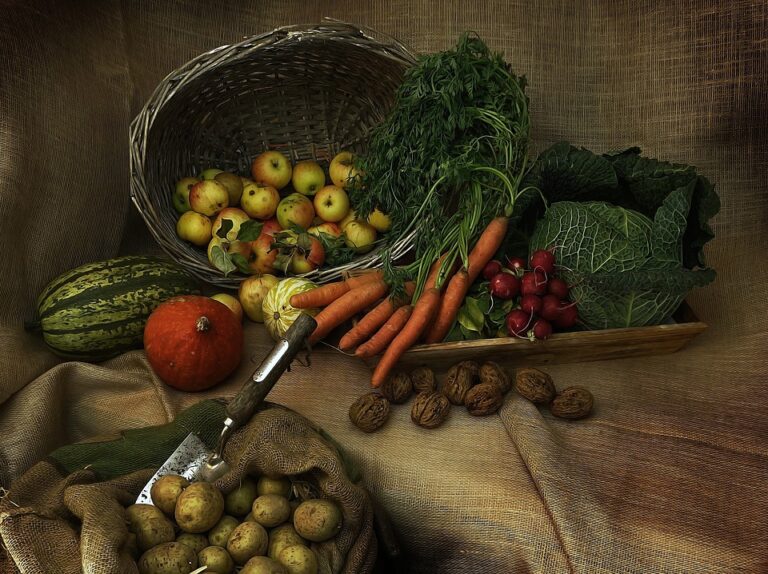Flavorful Foundations: Exploring the Intersection of Culinary Arts and Nutrition
In today’s health-conscious world, the fusion of culinary arts and nutrition is more vital than ever. Understanding the essence of culinary nutrition can transform not only how we eat but also how we perceive food’s role in our well-being. Embracing this intersection involves recognizing how flavors and nutrition can coexist, leading to delicious and beneficial meals for all.
The Importance of Culinary Nutrition
At its core, culinary nutrition incorporates the principles of cooking with the science of nutrition. It aims to empower individuals in the kitchen, offering them the knowledge and skills to create meals that are both nutritious and flavorful. The American Culinary Federation notes that over 80% of chefs believe culinary nutrition is crucial for meal preparation.
Trends Shaping the Industry
Recent statistics show that the global wellness industry has grown to over $4.5 trillion, with culinary nutrition progressively establishing its place within this market. Additionally, research conducted by the Harvard School of Public Health indicates that approximately 90% of Americans fail to meet the recommended intake of fruits and vegetables. This gap presents a significant opportunity for culinary professionals to bridge nutrition deficiencies through innovative recipes.
Integrating Flavor with Nutrition
Culinary Techniques that Enhance Nutrition
-
Seasonal Cooking: Utilizing seasonal produce ensures freshness and maximizes nutritional value. For instance, using tomatoes in late summer peak not only increases taste but also augments the intake of vitamins A and C.
-
Flavor Pairing: Understanding the chemistry of flavors can lead to more nutritious meals. For example, pairing spinach with citrus not only enhances flavor but also increases iron absorption.
- Healthier Alternatives: Chefs can employ healthier substitutes without compromising on taste. Replacing heavy cream with Greek yogurt in recipes can drastically reduce calorie consumption while adding protein.
Example: The Mediterranean Diet
The Mediterranean diet illustrates a perfect balance between culinary arts and nutrition. Rich in olive oil, vegetables, fish, and whole grains, it is not only delicious but also recognized for its health benefits, including reducing the risk of heart disease. By focusing on naturally flavorful ingredients, this diet exemplifies how culinary nutrition can lead to both flavor-packed and healthful dishes.
Educating the Next Generation of Culinary Experts
Culinary schools are gradually incorporating nutrition education into their programs, emphasizing the importance of culinary nutrition for aspiring chefs. Future cooks are now learning how to craft menus that not only taste great but also adhere to health standards.
Workshops and Certifications
Programs focused on culinary nutrition, such as workshops and certifications, are trending. Chefs who acquire this knowledge can cater to a health-conscious clientele, offering them delicious meals that align with their dietary needs.
The Future of Culinary Nutrition
As we look ahead, consumers are becoming increasingly knowledgeable about nutrition, sparking a demand for transparency in the culinary world. According to a survey by Food Marketing Institute, 70% of consumers express a desire for more information on the nutritional content of their meals. This awareness is pushing chefs and restaurants to prioritize culinary nutrition in their offerings.
Innovation through Technology
Emerging technology also plays a role in integrating culinary arts with nutrition. Apps that analyze nutritional information or suggest recipe modifications can facilitate healthier eating. Interactive tools allow consumers to modify recipes based on dietary restrictions or preferences, ensuring that healthy eating is always achievable.
Conclusion
Exploring the intersection of culinary arts and nutrition leads to a deeper appreciation for food’s role in our health journey. By embracing the principles of culinary nutrition, we can transform our relationship with food, ensuring our meals are not only satisfying but also beneficial. As culinary professionals continue to innovate and educate their clients, the flavorful foundations built on nutritional awareness will lay the groundwork for a healthier future.
Internal Links:
- Top 10 Health Benefits of Eating a Plant-Based Diet
- Cooking Techniques for Healthier Meals
- Understanding Food Labels: What They Really Mean
External Links:
- Harvard T.H. Chan School of Public Health: Nutrition
- American Culinary Federation Education Foundation
Disclaimer: The content provided in this article is for informational purposes only and does not constitute professional nutritional advice. Buzzo.live is not responsible for any outcomes resulting from the use of this content. For any specific dietary concerns, please consult a health professional.


